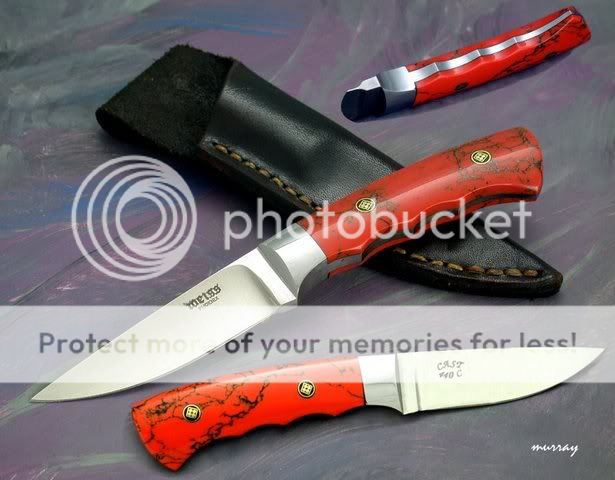I am not a knifemaker so i hope using this forum to ask a question is o.k.
i recently bought a Bird & Trout knife by Charles Weiss from a BF member. the steel is dendritic 440C and the blade is etched "Cast Steel".
i assume the maker used the stock removal method on a bar of this steel. surely he did not melt down a bar of 440C and then cast it into a blade shaped mold ? i.e. the dendritic steel is purchased as such in a bar ? so why is it called "cast" ? surely all steel is cast into bars(etc) at the steel foundry ?
this knife was made some years ago. i have not seen any currently made knives with this steel. did it proove to be not really superior to regular 440C ? or has it been eclipsed by newer steels like S30V, ATS-34, etc ?
are there any downsides to this dendritic steel ?
thanks for any help understanding this. roland
i recently bought a Bird & Trout knife by Charles Weiss from a BF member. the steel is dendritic 440C and the blade is etched "Cast Steel".
i assume the maker used the stock removal method on a bar of this steel. surely he did not melt down a bar of 440C and then cast it into a blade shaped mold ? i.e. the dendritic steel is purchased as such in a bar ? so why is it called "cast" ? surely all steel is cast into bars(etc) at the steel foundry ?
this knife was made some years ago. i have not seen any currently made knives with this steel. did it proove to be not really superior to regular 440C ? or has it been eclipsed by newer steels like S30V, ATS-34, etc ?
are there any downsides to this dendritic steel ?
thanks for any help understanding this. roland

